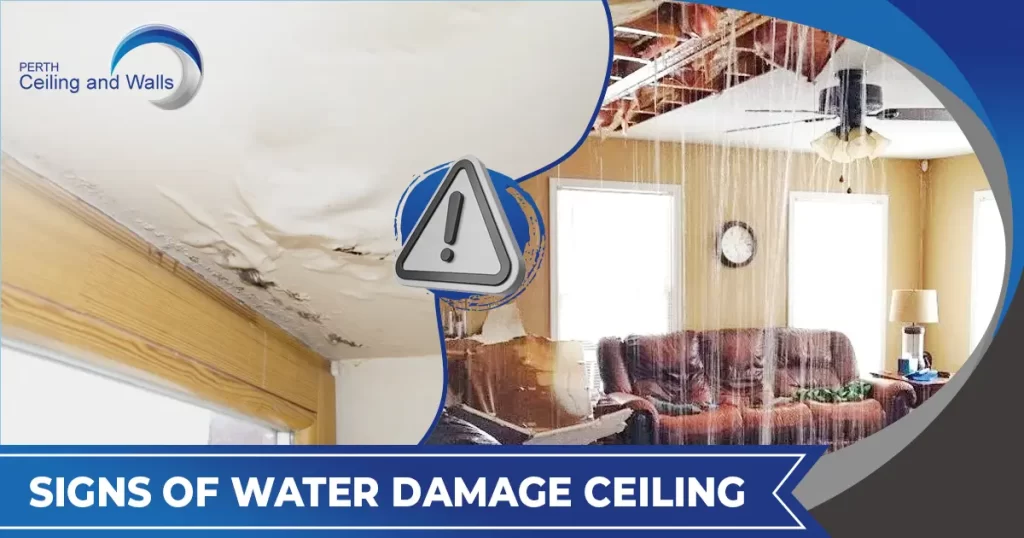
Water damage in the ceiling can be a silent but significant issue. It’s like a hidden enemy, slowly causing damage that can lead to big repair bills.
That’s why spotting the problem early is key to saving both your home and your wallet.
Water damage isn’t just about annoying drips from the ceiling. It’s a problem that can affect the structure of your entire home.
Think of water as an unwanted visitor that sneaks into your house, causing materials to swell, break, or rot. Over time, this can weaken your home’s foundation.
But don’t worry, knowing what to look for can help you catch this intruder before it’s too late.
Signs of Water Damage
Here are tell-tale signs that suggest your ceiling might be suffering from water damage.
1. Water Stains
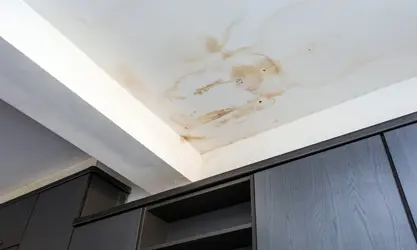
If you see brown or dark spots or rings that look like coffee stains, pay attention. These are water stains, and they’re not part of your ceiling’s design.
They show where water has dried after leaking. If these stains grow or change shape, it means the leak is still there.
2. Sagging, Bulging, or Bowing Sections
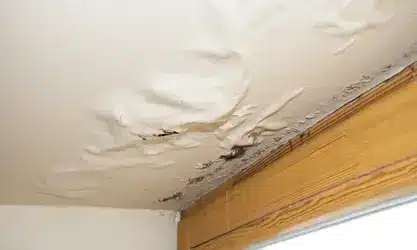
Your ceiling should be flat and strong. If it looks like it’s sagging or bulging, it’s waving a big red flag.
This means a lot of water is collecting there. It’s like your ceiling is holding a heavy backpack that’s getting heavier each day.
3. Ceiling Cracks
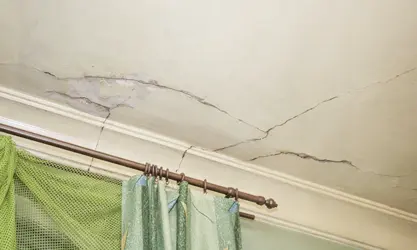
Small cracks might not seem like a big deal, but they can be the first step towards bigger problems.
If you see cracks, especially if they form patterns or get wider, it’s time to act. It means the structure of your home is being pushed and pulled by water damage.
4. Peeling, Cracking, or Bubbling Paint
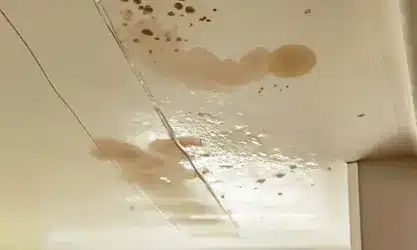
Paint that peels, cracks, or bubbles is telling you something. It’s like your ceiling’s skin is irritated.
This usually means water is trapped beneath the surface. Just like a balloon fills with air, your paint is filling with water.
5. Mould or Mildew Growth
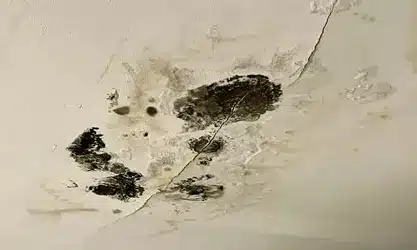
Seeing fuzzy or slimy spots? That’s mould or mildew, and it loves wet places. It can be black, green, or white and often shows up in corners or hidden areas.
Besides being gross, it can also be harmful to your health. You must clean the mould off the ceiling to keep your family healthy.
6. Discolouration
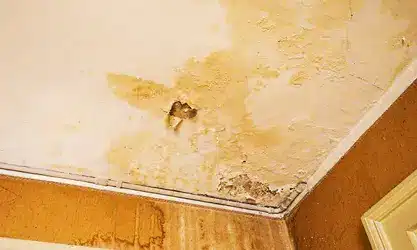
Any unusual changes in colour, like spots turning copper, yellow, or brown, are warnings.
Your ceiling should be one consistent colour. If it’s changing, it’s not just aging; it’s probably water damage.
7. Musty Smells or Weird Odours

Trust your nose. If there’s a musty or earthy smell, it’s a sign of moisture.
So it’s not all about the visuals. You might not see the damage, but the smell is a giveaway.
It’s like when food goes bad; you might not see it, but you can definitely smell it.
How to Confirm Your Suspicions
Feeling unsure? It’s okay to investigate, but be safe.
Touch the area lightly to see if it’s wet, soft, or crumbly. But don’t poke too hard, or you might make things worse.
You can also use a tool called a moisture meter. This gadget tells you how much water is in the walls or ceiling without making a hole.
When to Call a Professional
If you find any signs we talked about, it might be time to call in the water damage ceiling repair experts.
Water damage can be tricky, and fixing it is not always a DIY job. Professionals can find hidden leaks and fix the damage safely.
Remember, the sooner you act, the less it will cost and the safer your home will be.
Reviewed by
Aaron Kumar
Aaron Jefferson Kumar. The owner and operator of Perth Ceiling and Walls. With hands-on expertise in plasterboard ceiling and wall repairs and installations, Aaron takes pride in ensuring every project meets the highest standards of quality and craftsmanship. His direct involvement in both the business and the fieldwork positions him as a trusted person on all things related to ceiling and wall solutions.
